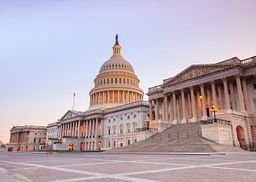A Public Health Emergency: PA Students Are Helping However They Can with COVID Vaccine Rollout

As COVID vaccines are rolled out across the nation, sometimes in chaotic fashion, PA students in several states and programs are putting their skills to work helping administer the many millions of doses that will be required. While health professions students were not included in most of the initial vaccination rollout plans developed by states, the need is acute and many PA students have been pulled into service either through governor’s executive orders or through fortuitous connections made by faculty and institutions. The national COVID strategy recently released by the Biden administration does include health professions students, in an attempt to expand the workforce and speed up delivery, so more PA students — as well as retired clinicians and others — may be mobilized for vaccination programs in the future.
PAEA has advocated for PA and other health professions students to be explicitly mentioned in federal and state rollout plans and will continue to do so. USA Today recently reported on the work of the Students Assist America (SAA) organization, in which PAEA is a collaborating organization, to advocate for more health professions students to be mobilized to help with the vaccine operation.
While the federal government has undertaken to purchase vaccine doses for all Americans and distribute them to states, and the vaccine rollout is being overseen by the Centers for Disease Control and Prevention (CDC), most of the details will be managed at the state and local level. Each state developed and submitted their own plans to the CDC in October and November, based on the CDC’s guidance to state health departments through its COVID vaccination program interim playbook. Since then, governors in many states have issued executive orders to expand the workforce to meet the need. However, direct authorization from the state is not required for PA students to help administer vaccinations, according to PA faculty interviewed for this story. In many cases students needed only to complete whatever training is required by their local health departments or health systems.
PA faculty at all of the programs we spoke to report that their students are immensely proud to be on the front lines, helping to both directly administer vaccinations and assisting with the intricate choreography needed to move millions of patients safely through a fragmented system during the greatest public health crisis of our lifetimes.
PA Students Answering the Call
Students in at least six PA programs — and there are likely many others — have been involved in the vaccine rollout in their communities. Faculty report that students have not only derived tremendous satisfaction from this work but also learned a great deal about communicating with patients, working with other professions, and public health.
“This has been a memorable and eye-opening public health experience for our students,” said Jason Hrdina, PA-C, MPAS, MPH, director of clinical education at the University of North Carolina at Chapel Hill PA program. “For any health professional student to be part of an interprofessional experience and directly contribute to the health and safety of the community, especially during a pandemic, it is truly a remarkable and rewarding experience. Our students are valuing the experiences as public health COVID-19 front line leaders and responders during this pandemic.”
The UNC program collaborated with the Carolina COVID-19 Student Services Corps (CSSC) developed through the university’s Office of the Provost Interprofessional Education and Practice. This program is designed to coordinate efforts across the university and leverage the power of all students to mitigate the pandemic. (Even non-health professions students are involved in activities like contact tracing and social media outreach.) The UNC PA students do it all, Hrdina said: “On average, our students are helping the healthcare system by assisting in the vaccination efforts of over 60 patients a day each. They manage their own patients under supervision, which includes explaining the immunization process, addressing patients’ questions and concerns, giving the injection, accurately documenting the immunization in the EMR, walking the patients to the waiting area for observation, and managing the flow of patients.”
The University of Maryland Baltimore PA program became involved through a more direct direction from the state, said Program Director Cheri Hendrix, DHEd, PA-C, who serves on UMB’s vaccine rollout committee. “The university was part of the state plan from Governor Hogan,” she said. “All the state universities will follow suit, and other PA programs will probably be involved as well. The need is so extreme. We are a small state but very densely populated.” UMB students will be administering the vaccine at the University of Maryland Medical Center, then eventually move to a larger venue to vaccinate the community at large, Hendrix said.
In other programs, the call for help was more urgent, and more local. Students at the California State University-Monterey Bay PA program responded very quickly when program faculty learned the day before that a planned Monterey County Health Department four-day vaccination drive in a parking lot on the CSUMB campus did not have enough personnel to manage the program. “We heard about it on the Sunday night then by the following day we were on it,” said Fred Sadler, MD, associate medical director at the CSUMB PA program (and the first president of PAEA’s predecessor organization, the Association of PA Programs, in 1972-73). “We made it top priority. We still did everything else we had to do. But this is a public health emergency.”
CSUMB students had not been trained to actually administer the vaccine, but there were plenty of other ways to help. Students helped move patients through the system in their cars, asking them questions about fever and symptoms, directing them to the right tent, then observing them (with faculty) for side effects. The program plans to offer its students and faculty to help when the county receives its next batch of vaccine, Sadler said, and next time students will have had time to train to actually administer the vaccinations.

Helping and Learning at the Same Time
All students who have actually administered the vaccine have undergone some kind of training — at the state or local level, or from a hospital or health system. At Xavier University of Louisiana, the institution will work with its partner, Ochsner Health, to develop education around the vaccine and administration so that students can take part in this historic effort. Ochsner, a large, non-profit, academic health system where Xavier students do all their clinical education, participated in several of the vaccine trials. Ochsner also made the commitment to vaccinate all providers, partnership clinical students included.
“Ochsner and Xavier’s commitment to making sure our students remain safe while continuing to provide care and learn in the middle of a pandemic is significant,” said Jill Fitzpatrick, PA-C, director of clinical studies for the Xavier program. “The students will disseminate vaccine education during their rotations and for years to come. It is a unique opportunity for students to concurrently volunteer in the vaccine administration effort while also educating patients about vaccines during clinical rotations.”
At UMB, the University of Maryland Medical Center will give students additional training, especially in the details of the patient flow, Hendrix said. “It is not hard to do the job, but it’s a very choreographed system. Some students will be navigators, some will do medical records. Faculty will be supervisors and observers.”
At the James Madison University PA program, students had to successfully complete seven education modules from the state health department, plus some additional training from Moderna on the cold storage requirements for that vaccine, said Program Director Jerry Weniger, MPAS, PA-C. Weniger received an email from his local health department, asking for student volunteers.
All programs we spoke to for this story stressed that while it is important for students to pitch in during this public health emergency, their progress through the program must continue. “It cannot affect their other studies,” Hendrix said. “They all want to volunteer. We folded it into their curriculum. They are learning team-based healthcare, interprofessional relationships, learning to be good communicators with the other members of the health care team and the public.”
Hrdina created a public health elective rotation to provide a structure for the students’ work and also arranged an affiliation agreement with the local public health department to allow students to provide vaccines to the community. Students spend six to eight hours a day providing vaccinations and doing surveillance testing and contact tracing as part of the practical experience — resulting in 75 or more hours for the rotation. Prior to giving the vaccine, each student completed an in-person four-hour workshop on handling and administration of the vaccine. Students also completed independent learning modules and online reading to help facilitate the understanding, prevention, and treatment of COVID-19.
Learning to Be Leaders
As the vaccine rollout picks up pace around the country, PA and other health professions students will undoubtedly need to be part of the solution, working with vaccination programs and freeing up other providers to care for patients. As the SAA website notes, “We need to look beyond our overwhelmed healthcare workforce for solutions. They simply cannot do this alone. We need to adopt an all hands-on-deck approach, and nearly 1 million skilled students across health professions are ready to answer that call.” And PA students are ready. “Our students want to be leaders,” Hendrix said.




